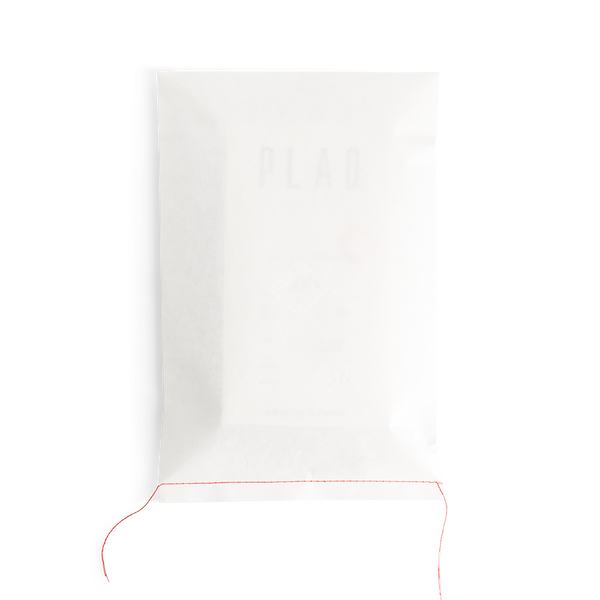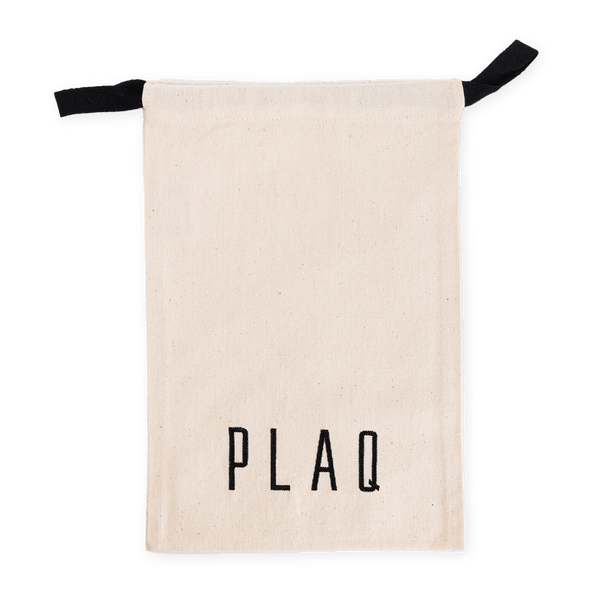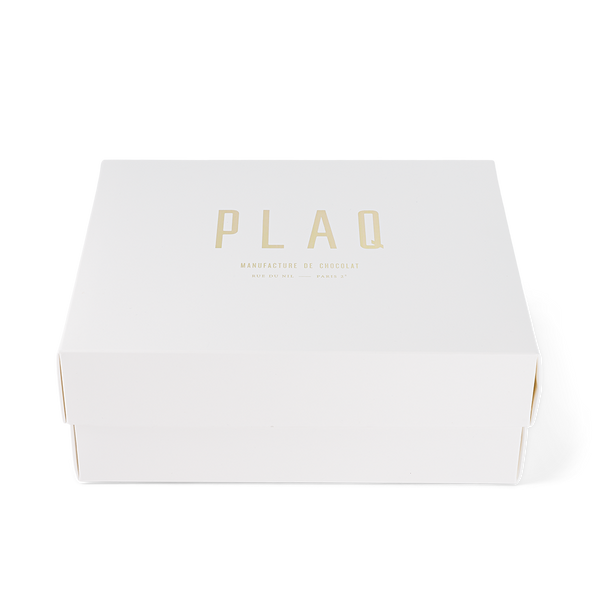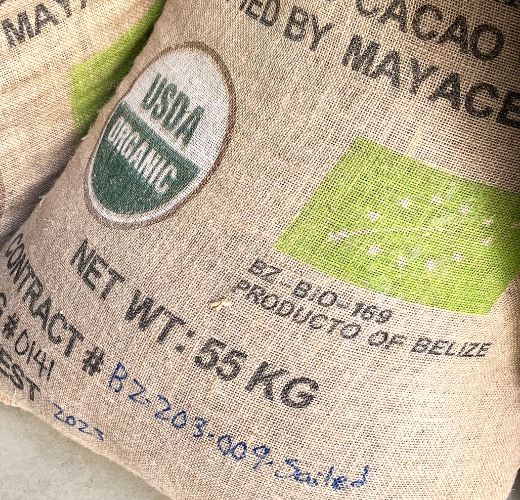From the first emotions in an unknown land to the intimacy of the know-how practiced every day on Rue du Nil.
Faithful to our cocoa, to their origins, to their farmers, we learn over the seasons to know the beans inside out. They always surprise us and keep us alive. Like tightrope walkers at the mercy of a living raw material, every day suspended on our senses.
Desire ? To achieve a chocolate that is as rare as it is precise. Surprise you in turn. Without ever losing sight of the pleasure of the first bite.
From cocoa pods from the four corners of the world to PLAQ from our Parisian factory-boutique, there is ultimately only one step. The demand for taste, with impact as a guide. 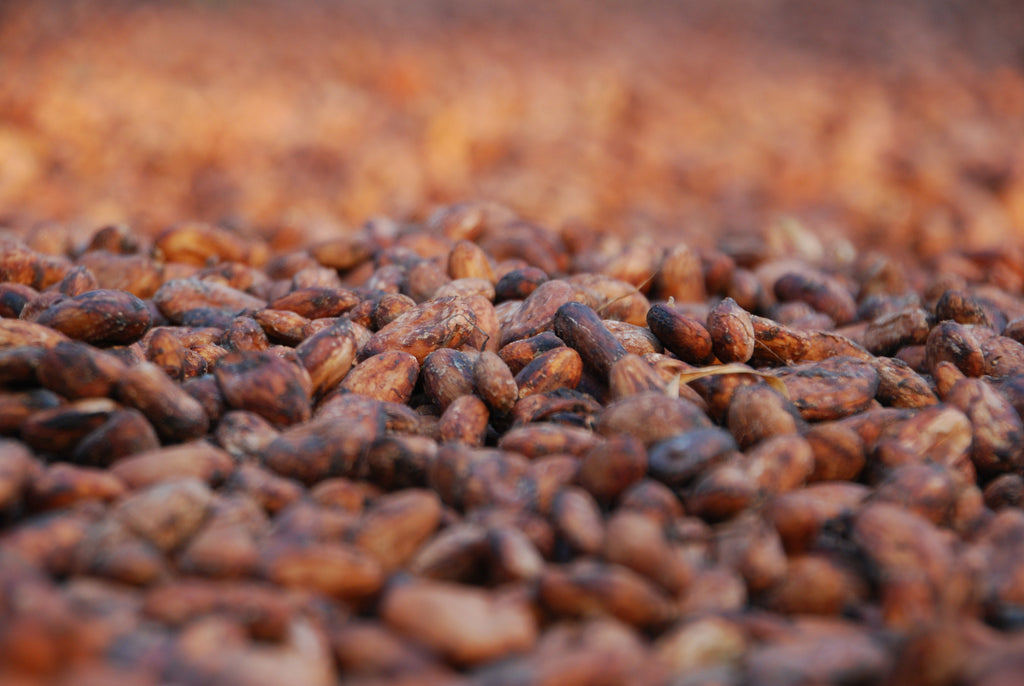
Kamili cocoa, from the bean to the PLAQ
Direction Tanzania, in East Africa. In the Kilombero valley, between corn fields and banana trees, is the Kokoa Kamili facility. A mecca for the cultivation of cocoa trees in agroforestry, fair and traceable since 2013.
Simran Bindra and Brian Loube, two young Tanzanian graduates from Stanford, are betting here on revealing the full potential of Tanzanian cocoa. The soil, the climate, the ecosystem: it’s all there. The beans, composed of Trinitario beans, a hybrid variety resulting from the mixture of Criollo and Forastero beans, and Neo-Nacional beans are promising. It remains to coordinate the cultivation of this virtuous cocoa, certified organic, contributing to soil diversity, worked without pesticides or chemical fertilizers.

Margherita, responsible for transforming the cocoa bean into PLAQ chocolate, worked closely with the Morogoro cooperative. This pilgrimage in the footsteps of Kamili in September 2022 was his first contact with the cocoa plantations. She tells the story behind the scenes of an initiatory journey that she will remember for a long time.
The bean purchasing station, central, attracting all movements in the valley. 
The intuition of the producers which brings its extra soul to Kamili cocoa consists of paying the farmers for their fresh beans . As much as they used to be for fermented beans. No longer a question for farmers to take care of fermentation, Kokoa Kamili takes care of it and magnifies it.
Drained then delicately stirred in fermentation tanks for 6 days, the Kamili cocoa bean unfolds its aromas before being dried in the open air for an additional week. There, we take care to shelter it in the evening or in the event of rain in order to protect it from humidity.
From their land of origin, the beans resulting from fermentation undergo an initial sorting by hand, and not just any sort. The mamas, “mothers” in Swahili, take care of this with rigor and attention to detail.  The cooperative is not just a place of production, it is a pillar of daily life. She knows all her farmers, accompanies them on their plantations, provides them with young trees, travels to them to avoid long journeys.
The cooperative is not just a place of production, it is a pillar of daily life. She knows all her farmers, accompanies them on their plantations, provides them with young trees, travels to them to avoid long journeys.
Among the cocoa beans, physical maneuvers and intense smells emerge smiling faces, proud to work for this local symbol of success. And that’s how the magic happens.
Silva Cacao , a sourcer of quality cocoa based in Antwerp, takes over to import Kamili cocoa into Europe... right to the doors of our boutique factory.
What PLAQ likes about Kamili cocoa
Once at our home, rue du Nil in Paris, the bags of Kamili cocoa beans are opened one by one.
The beans are tasted, sorted, roasted at low temperature, mixed with unrefined cane sugar, crushed then stone kneaded for 3 days before resting for 3 weeks.
At this stage, the tasters form a small privileged committee. Sandra and Nicolas, the co-founders of PLAQ, and Margherita, our cocoa expert, meet every week around the beans just received and then each of the manufacturing stages.
What they say? The charm of Kamili cocoa lies in its accessible singularity.
Its roundness, smooth and chocolatey, recalls the traditional markers of chocolate.
Having become inseparable from the PLAQ signature, it can be eaten pure in 76% dark PLAQ or combined with other equally charismatic ingredients, giving birth to PLAQ chocolates with an unparalleled taste.
It covers PLAQ pralines, bars, praline rocks, just roasted almonds. It is the basis of PLAQ with nut inclusions and the many pastry recipes offered on rue du Nil.

So why so many Kamili? Whether it mixes with hazelnuts from Piedmont, pistachios from Bronte, almonds from the South of France, coconut from Sri Lanka or pecans from South Africa, its character continues to exist in the presence of its partners, while letting them express themselves.
Far from coating in the traditional way, it takes its place accurately, each time creating a new story in which the chocolate expresses itself in its own right.
Like any good specialty cocoa , Kamili cannot be labeled: it evolves from one year to the next. Depending on the sunshine, the harvest time and the ups and downs of life.
When harvested late in the season, it is frankly tart, bordering on lemony notes mixed with accents of black fruits.
If it is taken care of more prematurely, it leaves in the mouth a taste of red fruits (cherries, berries, plums), dried fruits, floral notes (violet, rose)... almost an impression of biscuit.
Taste tested, will you love it as much as we do?
Kamili cocoa in the eye of PLAQ
The dream ? Being looked at like PLAQ looks at cocoa beans.
Between our 3 variations of Kamili cocoa, bare or adorned with inclusions, the hardest part is undoubtedly making a choice.
To your PLAQ.
 |
Kamili Pure Dark Chocolate 74% Kamili organic cocoa beans from Morogoro Tanzania (74%) and unrefined organic cane sugar from the state of São Paulo Brazil (26%). Without lecithin. No added cocoa butter.
|
 |
Kamili Pure Dark Chocolate 74% Whole Hazelnuts Kamili organic cocoa beans from Morogoro Tanzania (74%), organic unrefined cane sugar from the state of São Paulo Brazil (26%), organic PGI hazelnuts from Piedmont Italy. Without lecithin. No added cocoa butter.
|
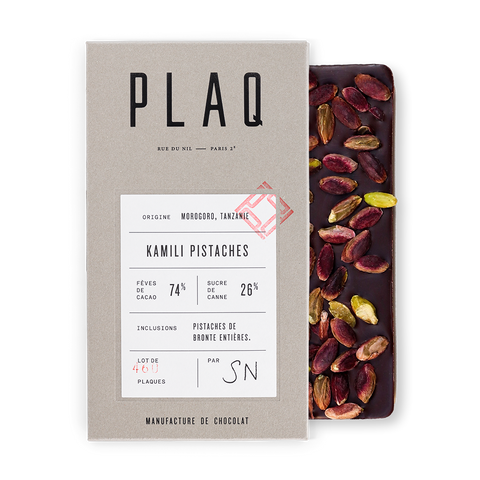 |
Kamili Pure Dark Chocolate 74% Whole Pistachios Kamili organic cocoa beans from Morogoro Tanzania (74%), unrefined organic cane sugar from the state of São Paulo Brazil (26%), whole bronte pistachios. Without lecithin. No added cocoa butter. |
Sandra Mielenhausen and Nicolas Rozier-Chabert founded PLAQ in 2015. Guided by their love of chocolate, they surrounded themselves with Chloé Doutre-Roussel, Bean to bar ambassador, to open their factory-boutique in the 2nd borough of Paris. Made on site in limited quantities, PLAQ chocolate is pure, from its ingredients to its packaging, including its taste. After their signature product, PLAQ, a slab of chocolate without a square, they now offer their know-how in bars, drinks, pastries, rocks and coated dried fruits. For chocolate lovers, chefs who reinvent gastronomy and all those who share the love of things well done.


